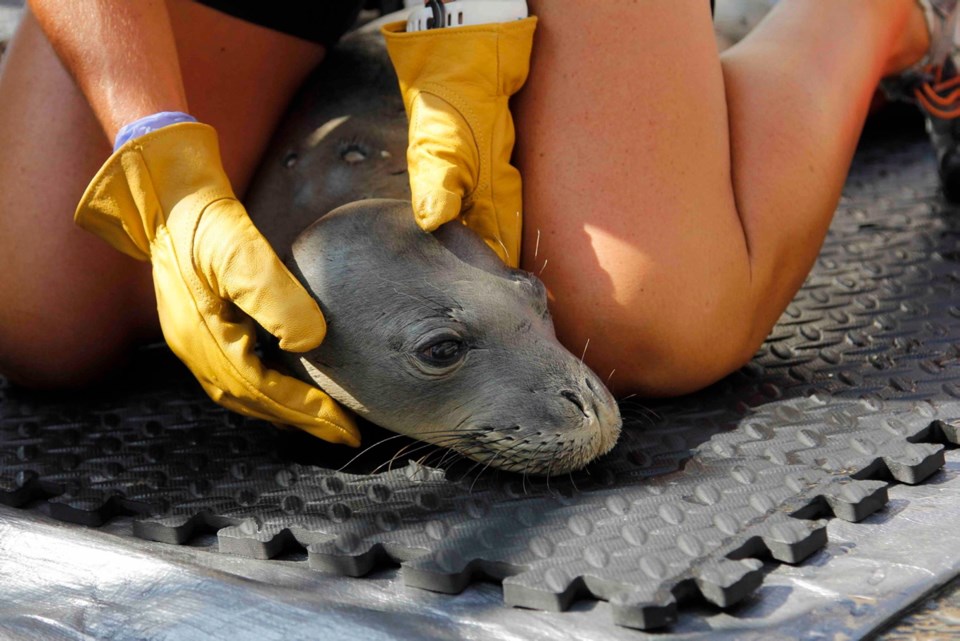HONOLULU — The population of Hawaiian monk seals — one of the world’s most critically endangered marine mammals — has been increasing three per cent a year for the past three years, U.S. wildlife officials say.
There are now about 1,400 of the seals in the wild, said Charles Littnan, lead scientist of the Hawaiian Monk Seal Research Program at the U.S. National Oceanic and Atmospheric Administration.
“This is phenomenal, hopeful news for the population,” Littnan said Tuesday. “Yet we have a long way to go to recovery.”
The population has experienced increases in the past, including the mid-2000s, but Littnan characterized those as minor blips.
Hawaiian monk seals declined in numbers for years, most recently as juveniles struggled to compete for food with large fish and sharks in the remote Northwestern Hawaiian Islands, a mostly uninhabited stretch of tiny atolls that includes Midway.
Sharks also attacked recently weaned seals at French Frigate Shoals, one of the chain’s most pristine atolls.
At one point, only one in five juveniles in the Northwestern Hawaiian Islands lived to adulthood.
Littnan said more juveniles are now surviving in part because of programs like those that disentangle seals from marine debris and take malnourished young seals to a Big Island seal hospital to nurse them back to health.
Littnan says about 30 per cent of Hawaiian monk seals are alive today because of the programs.
He also attributed the rebound to broader environmental changes, such as El Niño, which is a periodic warming of parts of the Pacific that changes weather globally. El Niño patterns can help boost the food supply for the seals that eat squid, eels, crab and other marine life.
The population in the Northwestern Hawaiian Islands is estimated at about 1,100. The population in the main Hawaiian Islands, home to Honolulu and other cities, is 300. The population in the main islands was growing for many years but has levelled out and stabilized, Littnan said.



